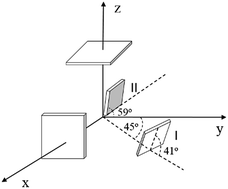Study on nonlinear refractive properties of KDP and DKDP crystals
Abstract
The nonlinear refractive index n2 is an important parameter for the nonlinear optical properties of a medium. This study primarily targets to measure the third-order nonlinear optical properties of potassium dihydrogen phosphate (KDP) and deuterated potassium dihydrogen phosphate (DKDP) with 70% deuteration content at λ = 532 nm using the Z-scan technique. The relationship between nonlinear refraction and direction has been studied in detail. Nonlinear refractive index n2, γ and third-order nonlinear susceptibilities xk3 (esu) were calculated through normalized transmittance curves and theoretical formulas. The results indicate that the nonlinear refractive indexes of KDP and DKDP are positive and possess obvious self-focusing effects in high-power laser systems.


 Please wait while we load your content...
Please wait while we load your content...